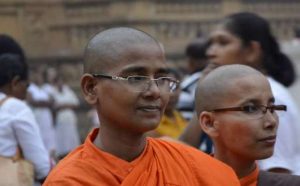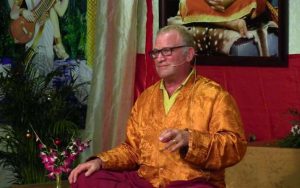
The Secret of the Golden Flower is a mental technique for primal awareness that arose in China more than a thousand years ago. The text, a short manual that teaches how to conduct the essential practice according to the identification of inner states, is attributed to the legendary Tang dynasty mystic, the immortal Lu Dongbin, and is considered one of the world’s spiritual classics. The aim of the practice is to free the mind from self-imposed limitations brought on by an individual’s habitual fixations on the contents of their own mind. The practice and the text do this without extensive reference to religious or cultural specifics. The text describes itself as “a special transmission outside of doctrine.” Practically, it is a distillation of Daoist and Buddhist techniques for recognizing fundamental emptiness.

At its heart, The Secret of the Golden Flower teaches the meditator how to distinguish primal mind from conscious mind. Primal mind is the unconditioned source of consciousness. Conscious mind is the mind in action, using the senses to inform processes of identification and thought. The basic idea can be explained using the Chan terms “host” and “guest.” Chan teachings explain the “two minds” in this way, summed up in the four relationships between host and guest, and reduced to something akin to a jingle:
the guest within the guest
the host within the guest
the guest within the host
the host within the host
Where the host is primal awareness and the guest is mundane consciousness, “the guest within the guest” is the normal mind going from one state to another, having the primal mind inactive in the background. “The host within the guest” is the first stage of “turning the light around;” a functional awareness that leads the individual to an experience of their own transcendent being. “The Guest within the host” marks another level of attainment. In this state the individual can move freely between any state of perception or thought; any state of mood or personality, without being attached to it. “The host within the host” is the original spirit itself, in which the pivot, the primal source of consciousness, provides what the eminent translator Thomas Cleary calls “the turning point on which psychic liberty hinges.”

There are any number of teachings in Chan, Zen, and Daoism that illustrate all or part of the Golden Flower teachings. A well-known Zen adage advises: “If you can awaken the real one within, you will know that entering one state and leaving another, is like staying at an inn.”
Immortal Ancestor Lu’s most famous story concerns his traveling to gain mastery and staying a night at an inn, where an old woman cooked him a bowl of millet while he laid down and took a nap. In his dream, he became the wealthiest man in the world; then the most attractive to women; then he became the greatest ruler in the world. The old woman woke him up when the millet was ready. Upon waking, Ancestor Lu became enlightened, realizing that, after having it all—within the time it takes to cook millet—none of it was real.

A similar teaching is expressed in early Daoist master Chaung Tzu’s famous story of the butterfly. Chuang Tzu dreamed that he was a butterfly. Upon waking, he wondered: “Am I a man dreaming I was a butterfly, or a butterfly dreaming I am a man?”
The Secret of the Golden Flower can be called a spirit-based method of enlightenment. Although it is intended to be free from all defining cultural or religious jargon and motivations, the text nevertheless relies on “twilight language,” a term that refers to language expressly designed to evoke and induce higher consciousness, and further to help the practitioner identify the characteristics of the mental states in which they find themselves. In addition to using language that describes the indescribable, the text also includes many contradictions. “The mysterious pass is in the upper chamber of the mind,” pairs with “You will never find the mysterious pass in the upper chamber of the mind!” These instructions force the individual to make experiential observations for themselves and to forgo reliance on rational instructions. Finding or not finding the mysterious pass are finally Chuang Tzu and his butterfly.
The core emphasis being on spiritual autonomy, this great essential ancient practice of mind is entirely experiential. Among contemporary teachers of essential practices of spirit, the greatest use nothing to teach: no text, no art, no stories. It is for reasons of the experiential priority of the exercise, its non-sectarian and universal qualities, that the technique is found to be employed effectively by calligraphers, by martial artists, by meditators, by opera performers and artists of all kinds. The wide variety of applicability draws a line under the fundamental intention of the practice: that lay people of all stripes as they carry on their daily lives, can be enlightened by their own personal experience. Their art can be uplifted and of a raised consciousness, their perceptive awareness can embrace emptiness, their spirit can create with light.

See more
Related features from Buddhistdoor Global
The Secret of the Golden Flower, Part One













